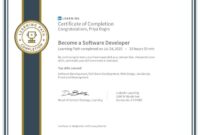How to build a great software engineering team is a question that many organizations grapple with. It’s not just about hiring talented engineers; it’s about creating a culture of collaboration, innovation, and continuous improvement. A high-performing software engineering team is the backbone of any successful tech company, and building one requires a strategic approach that encompasses everything from team goals and values to performance management and leadership.
This guide delves into the key aspects of building a great software engineering team, offering practical insights and actionable strategies. We’ll explore the importance of diversity, the art of recruiting top talent, the power of effective onboarding and training, and the significance of fostering a positive and supportive team culture.
By following these principles, you can create a team that thrives on innovation, delivers exceptional results, and contributes to the long-term success of your organization.
Defining Team Goals and Values
A well-defined set of team goals and values is the cornerstone of a successful software engineering team. These elements act as a compass, guiding the team towards a shared vision and fostering a collaborative and productive work environment.
The Importance of Establishing Clear Team Goals and Values
Clearly defined team goals and values provide a framework for aligning individual contributions with the overall business objectives. They serve as a common reference point for decision-making, conflict resolution, and performance evaluation. By establishing a shared understanding of what the team is striving for, members can work together effectively and efficiently, minimizing confusion and maximizing productivity.
Examples of Effective Team Goals and Values
- Team Goals:
- Delivering high-quality software products on time and within budget.
- Continuously improving development processes and methodologies.
- Building a strong team culture that fosters innovation and creativity.
- Team Values:
- Collaboration:Emphasizing open communication and shared decision-making to encourage teamwork and collective ownership.
- Excellence:Striving for high standards in all aspects of work, from code quality to communication.
- Continuous Learning:Encouraging team members to embrace new technologies and methodologies to stay ahead of the curve.
Involving Team Members in Defining Goals and Values
The process of defining team goals and values should be collaborative and inclusive. Involving team members in this process fosters a sense of ownership and buy-in, ensuring that the goals and values reflect the team’s collective aspirations.
- Facilitated Workshops:Conducting workshops where team members can brainstorm and discuss potential goals and values. This allows for open dialogue and ensures that all voices are heard.
- Surveys and Feedback:Gathering input from team members through surveys or feedback forms can provide valuable insights into their perspectives and priorities.
- Regular Reviews and Updates:As the team evolves, it’s essential to revisit and update the goals and values to ensure they remain relevant and aligned with the changing needs of the business and the team.
Building a Diverse and Inclusive Team
A diverse and inclusive team is not just a feel-good initiative; it’s a strategic necessity for building a successful software engineering team. By embracing diversity, we tap into a wider pool of talent, perspectives, and experiences, ultimately leading to more innovative solutions and better products.
Benefits of a Diverse Team
A diverse team offers numerous advantages, enhancing problem-solving, creativity, and overall team performance.
- Enhanced Problem-Solving:Diverse teams bring a variety of approaches and perspectives to problem-solving. This leads to more comprehensive solutions, as different individuals may identify aspects of the problem that others might miss.
- Increased Creativity:A team with diverse backgrounds and experiences fosters a more creative environment. Exposure to different ways of thinking encourages out-of-the-box ideas and innovative solutions.
- Improved Decision-Making:Diverse teams make more informed and balanced decisions. Exposure to different perspectives helps mitigate biases and leads to more inclusive outcomes.
- Enhanced Communication:A diverse team, with individuals from various backgrounds and communication styles, can learn to communicate more effectively with each other and with diverse user groups.
- Improved Employee Morale and Retention:A culture of inclusion and respect fosters a sense of belonging, boosting employee morale and reducing turnover.
Strategies for Attracting and Retaining Diverse Talent
Attracting and retaining a diverse team requires a proactive approach, focusing on inclusive recruitment practices and creating a welcoming environment.
- Expand Recruitment Networks:Reach out to underrepresented groups through targeted recruitment efforts, such as attending conferences and events focused on diversity and inclusion, partnering with organizations promoting diversity in tech, and leveraging social media platforms.
- Review Job Descriptions:Ensure job descriptions are inclusive and avoid gendered or biased language. Focus on skills and qualifications, rather than stereotypes.
- Implement Blind Hiring:Consider blind hiring practices where resumes are reviewed without personal information, minimizing unconscious bias in the selection process.
- Offer Flexible Work Arrangements:Flexible work arrangements, such as remote work options, can attract individuals with diverse needs and responsibilities.
- Invest in Employee Development:Provide equal opportunities for professional development and growth to all team members, regardless of background.
- Create Employee Resource Groups (ERGs):ERGs provide a platform for employees from underrepresented groups to connect, share experiences, and advocate for inclusivity.
Fostering an Inclusive Team Culture
Creating an inclusive team culture requires a conscious effort to build trust, respect, and a sense of belonging.
- Establish Clear Expectations:Clearly communicate expectations for behavior and interactions within the team. Emphasize respect, empathy, and open communication.
- Promote Open Dialogue:Encourage open and honest conversations about diversity and inclusion. Create safe spaces for team members to share their experiences and perspectives.
- Celebrate Differences:Recognize and celebrate the unique contributions of each team member. Highlight diverse perspectives and experiences as valuable assets.
- Provide Inclusive Training:Offer training on diversity, inclusion, and unconscious bias to all team members.
- Regularly Review and Adapt:Continuously evaluate and adapt your efforts to create a more inclusive team culture. Seek feedback from team members and make adjustments as needed.
Recruiting and Hiring Top Talent
Building a great software engineering team requires attracting and retaining top talent. This means having a clear understanding of the key skills and qualities to look for in potential candidates, implementing effective recruitment strategies, and establishing a comprehensive interview process that assesses both technical expertise and cultural fit.
Key Skills and Qualities to Look For, How to build a great software engineering team
Identifying the essential skills and qualities in software engineers is crucial for building a successful team. While technical proficiency is fundamental, other aspects like problem-solving abilities, communication skills, and a collaborative mindset are equally important.
- Technical Proficiency:Software engineers should possess strong foundational knowledge in programming languages, data structures, algorithms, and software design principles. They should also demonstrate proficiency in relevant technologies and frameworks used within the organization.
- Problem-Solving Skills:The ability to analyze complex problems, break them down into manageable components, and develop effective solutions is essential. Software engineers should be able to think critically and creatively to find innovative solutions.
- Communication Skills:Effective communication is vital for collaborating with team members, stakeholders, and clients. Engineers should be able to articulate their ideas clearly, both verbally and in writing, and actively listen to others.
- Collaboration and Teamwork:Software development is a collaborative effort, requiring engineers to work effectively as part of a team. They should be able to contribute to shared goals, provide constructive feedback, and support their colleagues.
- Learning Agility:The software development landscape is constantly evolving. Engineers should demonstrate a willingness and ability to learn new technologies, adapt to changing requirements, and stay up-to-date with industry trends.
Onboarding and Training
A smooth onboarding experience is crucial for new team members to feel welcomed, understand their role, and contribute effectively. Similarly, well-structured training programs empower engineers with the necessary skills and knowledge to excel. Furthermore, ongoing mentorship and support are essential for fostering professional growth and keeping engineers engaged.
Structured Onboarding Process
A well-defined onboarding process guides new team members through their initial days and weeks, easing their transition and setting them up for success. Here are key components of a structured onboarding process:
- Welcome and Orientation:Start with a warm welcome, introducing the team and company culture. Provide a comprehensive overview of the company’s mission, values, and goals. This helps new team members understand the bigger picture and their role within it.
- Team Introductions and Integration:Facilitate introductions to team members, including their roles and responsibilities. Encourage team bonding activities and informal interactions to build rapport and foster a sense of belonging.
- Project Overview and Responsibilities:Clearly define the new team member’s role, responsibilities, and expected contributions to ongoing projects. Provide context, timelines, and relevant project documentation for a smooth start.
- Technical Environment and Tools:Introduce the technical environment, including development tools, version control systems, and communication platforms. Provide hands-on training and support to ensure familiarity with the tools and workflows.
- Company Policies and Procedures:Familiarize new team members with essential company policies, procedures, and documentation. This includes information on benefits, time off, and communication protocols.
- Mentorship and Support:Assign a dedicated mentor to guide the new team member through their initial weeks. The mentor can answer questions, provide feedback, and help navigate the company culture and processes.
Training Programs
Training programs are essential for equipping engineers with the latest technologies, best practices, and industry standards. These programs should be tailored to the specific needs of the team and aligned with the company’s goals.
- Technical Skills Training:Offer training in specific programming languages, frameworks, and technologies relevant to the team’s projects. This could include workshops, online courses, or internal training sessions led by experienced engineers.
- Soft Skills Development:Focus on developing essential soft skills such as communication, teamwork, problem-solving, and conflict resolution. This can be achieved through workshops, coaching sessions, and team-building activities.
- Industry Best Practices:Keep engineers updated on industry best practices, coding standards, and security guidelines. This can be achieved through conferences, webinars, and internal knowledge sharing sessions.
- Leadership and Management Training:For senior engineers or those aspiring to leadership roles, provide training on leadership principles, team management, and effective communication.
Ongoing Mentorship and Support
Providing ongoing mentorship and support fosters a culture of continuous learning and growth. This can take various forms:
- Regular Check-ins and Feedback:Schedule regular one-on-one meetings with team members to discuss their progress, challenges, and career goals. Provide constructive feedback and guidance to help them improve their skills and performance.
- Peer-to-Peer Learning:Encourage a culture of peer-to-peer learning, where engineers can share knowledge, best practices, and support each other. This can be facilitated through internal knowledge sharing sessions, code reviews, and pair programming.
- Professional Development Opportunities:Support engineers in pursuing professional development opportunities such as conferences, workshops, certifications, and online courses. This demonstrates the company’s commitment to their growth and helps them stay ahead of the curve.
Team Communication and Collaboration
Effective communication and collaboration are the lifeblood of any successful software engineering team. Without these crucial elements, projects can stall, misunderstandings can arise, and productivity can suffer. This section will explore effective communication channels, collaboration tools, and strategies for conflict resolution to foster a harmonious and productive team environment.
Effective Communication Channels and Strategies
Establishing clear and open communication channels is essential for a cohesive team. Here are some strategies to consider:
- Regular Team Meetings:Regular team meetings, whether daily stand-ups, weekly progress updates, or bi-weekly retrospectives, provide a structured platform for sharing information, discussing challenges, and aligning on goals. These meetings should be concise, focused, and inclusive, ensuring everyone has a voice.
- Asynchronous Communication:Leveraging asynchronous communication tools like project management platforms (e.g., Jira, Asana), messaging apps (e.g., Slack, Microsoft Teams), or email for sharing updates, documents, and discussions allows team members to work independently and access information at their convenience.
- Clear Communication Practices:Encouraging clear and concise communication through written documentation, using consistent terminology, and providing context in messages helps prevent misunderstandings and ensures everyone is on the same page.
- Open Feedback Mechanisms:Creating a culture of open and constructive feedback is vital. This can be achieved through regular performance reviews, anonymous feedback channels, or dedicated feedback sessions, allowing team members to share their thoughts and suggestions openly.
Collaboration Tools and Techniques
Modern collaboration tools play a significant role in enhancing teamwork and productivity. Here are some key tools and techniques:
- Version Control Systems:Version control systems (e.g., Git) are essential for managing code changes, tracking revisions, and collaborating on software development. They allow multiple developers to work on the same codebase simultaneously, ensuring consistency and preventing conflicts.
- Project Management Tools:Project management tools (e.g., Jira, Asana) help teams organize tasks, track progress, manage dependencies, and communicate effectively. They provide a centralized platform for project planning, execution, and monitoring.
- Code Review Platforms:Code review platforms (e.g., GitHub, GitLab) facilitate collaborative code reviews, allowing team members to provide feedback, identify potential issues, and improve code quality. They promote knowledge sharing and enhance the overall codebase.
- Real-time Collaboration Tools:Real-time collaboration tools (e.g., Google Docs, Microsoft Office 365) enable teams to work on documents, presentations, and spreadsheets simultaneously, fostering real-time communication and shared understanding.
Managing Conflicts and Resolving Disagreements
Disagreements are inevitable in any team, but it’s crucial to manage conflicts constructively and find resolutions that benefit everyone. Here are some best practices:
- Open and Respectful Communication:When conflicts arise, it’s important to approach them with open and respectful communication. Avoid accusatory language and focus on finding solutions together.
- Active Listening:Active listening is crucial for understanding different perspectives and finding common ground. Pay attention to what others are saying, ask clarifying questions, and avoid interrupting.
- Focus on Solutions:Instead of dwelling on the problem, shift the focus to finding solutions. Brainstorm ideas together and consider all perspectives.
- Mediation or Facilitation:If conflicts escalate, consider involving a neutral third party (mediator or facilitator) to guide the discussion and help reach a resolution.
- Documentation and Agreement:Document the agreed-upon solution and ensure all parties understand and agree to the terms. This helps prevent future misunderstandings and ensures accountability.
Performance Management and Feedback
Performance management is a critical aspect of building a high-performing software engineering team. It goes beyond simply evaluating individual contributions; it’s about fostering growth, setting clear expectations, and creating a culture of continuous improvement.
You also will receive the benefits of visiting theres already a gender gap in whos leading the metaverse today.
Regular Performance Reviews
Regular performance reviews provide a structured opportunity for managers and team members to discuss progress, identify areas for development, and set goals for the future. Here’s a breakdown of the key aspects of conducting effective performance reviews:
- Establish Clear Expectations: Before a review, ensure that both the manager and team member have a shared understanding of performance goals, responsibilities, and key performance indicators (KPIs).
- Focus on Specific Examples: Instead of making general statements, use concrete examples to illustrate both strengths and areas for improvement. This makes feedback more actionable and impactful.
- Create a Collaborative Environment: Encourage open dialogue and active listening during the review. This allows team members to share their perspectives and contribute to the discussion.
- Set Actionable Goals: Identify specific steps that team members can take to address areas for improvement. These goals should be measurable and achievable within a reasonable timeframe.
- Provide Ongoing Feedback: Regular check-ins and informal feedback throughout the year can help to reinforce expectations, address concerns early on, and foster a culture of continuous improvement.
Delivering Constructive Feedback
Constructive feedback is crucial for individual and team growth. It involves providing specific, actionable, and timely information that helps individuals improve their performance. Here are some key principles for delivering constructive feedback effectively:
- Be Specific and Objective: Avoid vague statements or personal opinions. Focus on specific behaviors, actions, or outcomes.
- Focus on Behavior, Not Personality: Frame feedback in terms of observable behaviors rather than personal traits. For example, instead of saying “You’re not a team player,” say “You haven’t been participating in team meetings as actively as we’d like.”
- Be Timely: Deliver feedback as soon as possible after an event or behavior occurs. This ensures that the feedback is relevant and actionable.
- Use a “Sandwich” Approach: Start with a positive statement, followed by constructive feedback, and end with another positive statement. This helps to soften the feedback and maintain a positive tone.
- Encourage Two-Way Communication: Allow the recipient of feedback to ask questions and share their perspective. This fosters understanding and promotes a collaborative approach to improvement.
Recognizing and Rewarding Achievements
Recognizing and rewarding individual and team achievements is essential for fostering motivation, engagement, and a positive work environment.Here are some strategies for recognizing and rewarding achievements:
- Public Acknowledgement: Acknowledge individual and team contributions publicly during team meetings, company newsletters, or social media platforms.
- Performance Bonuses: Offer financial incentives for exceeding performance targets or achieving significant milestones.
- Non-Monetary Rewards: Provide non-monetary rewards such as gift certificates, company swag, or opportunities for professional development.
- Recognition Programs: Establish formal recognition programs that allow team members to nominate and recognize their peers for outstanding contributions.
- Celebrate Successes: Organize team events or celebrations to recognize and celebrate significant achievements.
Building a Strong Team Culture
A positive and productive team culture is essential for any software engineering team. It fosters collaboration, innovation, and a sense of belonging, ultimately leading to higher productivity and job satisfaction. A strong team culture is built on a foundation of shared values, clear communication, and a commitment to continuous improvement.
Key Elements of a Positive Team Culture
The following elements contribute to a positive and productive team culture:
- Open and Honest Communication:A culture of open and honest communication is essential for building trust and resolving conflicts. Encourage team members to share their ideas, concerns, and feedback openly and respectfully.
- Respect and Inclusivity:A culture of respect and inclusivity is crucial for creating a welcoming and supportive environment for all team members. Ensure that everyone feels valued and heard, regardless of their background, experience, or opinions.
- Collaboration and Teamwork:Encourage collaboration and teamwork by fostering a spirit of shared responsibility and a willingness to help each other. Create opportunities for team members to work together on projects and share their knowledge.
- Continuous Learning and Growth:Promote a culture of continuous learning and growth by encouraging team members to seek out new challenges, develop their skills, and stay up-to-date with the latest technologies.
- Feedback and Recognition:Provide regular feedback and recognition to team members for their contributions and efforts. This helps to motivate and inspire team members and create a positive and supportive work environment.
- Work-Life Balance:Encourage team members to maintain a healthy work-life balance by promoting flexible work arrangements, providing adequate time off, and supporting their personal well-being.
Impact of Team-Building Activities and Social Events
Team-building activities and social events play a crucial role in building team morale and cohesion. They provide opportunities for team members to bond, build relationships, and develop a sense of camaraderie.
- Improved Communication:Team-building activities can help to improve communication by providing a platform for team members to interact with each other in a relaxed and informal setting.
- Enhanced Collaboration:Activities that require teamwork and collaboration can help to build trust and improve teamwork skills.
- Increased Morale:Social events can help to boost morale by providing team members with opportunities to relax, socialize, and have fun together.
- Stronger Bonds:Team-building activities can help to strengthen bonds between team members by creating shared experiences and memories.
Examples of Successful Team Cultures in the Software Engineering Industry
Many companies in the software engineering industry have cultivated successful team cultures. Some notable examples include:
- Google:Google is known for its emphasis on innovation, creativity, and employee well-being. The company offers a wide range of benefits and perks, including free meals, on-site gyms, and generous vacation time. Google also invests heavily in employee training and development, fostering a culture of continuous learning.
- Netflix:Netflix is known for its culture of freedom and responsibility. The company empowers its employees to make decisions and take ownership of their work. Netflix also offers a generous compensation package and a flexible work environment.
- Zappos:Zappos is known for its focus on customer service and employee happiness. The company offers a unique culture that emphasizes values such as “delivering WOW through service,” “embrace and drive change,” and “create fun and a little weirdness.”
Leadership and Management: How To Build A Great Software Engineering Team

Building a great software engineering team requires not just talented individuals but also effective leadership and management. The right leadership can inspire, motivate, and guide the team towards success, while poor management can lead to demotivation, disengagement, and ultimately, failure.
Key Leadership Qualities
The qualities of a great leader in software engineering are essential for creating a positive and productive team environment.
- Technical Expertise: A strong understanding of software development principles, methodologies, and technologies is crucial. Leaders can provide technical guidance, make informed decisions, and effectively communicate with team members.
- Communication and Interpersonal Skills: Effective communication is vital for fostering collaboration, resolving conflicts, and ensuring everyone is on the same page. Leaders should be able to clearly articulate goals, provide constructive feedback, and actively listen to team members.
- Vision and Strategy: Leaders must have a clear vision for the team’s future and a strategic plan for achieving it. They should be able to set ambitious goals, identify opportunities, and guide the team towards achieving them.
- Motivation and Inspiration: Great leaders inspire and motivate their teams to perform at their best. They create a positive and encouraging environment, celebrate successes, and provide opportunities for growth and development.
- Delegation and Empowerment: Leaders should trust their team members and delegate tasks effectively. Empowering team members to make decisions and take ownership of their work fosters autonomy and promotes a sense of responsibility.
- Problem-Solving and Decision-Making: Leaders must be able to identify and analyze problems, make sound decisions, and implement solutions effectively. They should be able to navigate complex situations and find creative solutions.
Effective Management Styles
Different management styles can impact team performance in various ways. Understanding these styles and their implications is crucial for choosing the most appropriate approach.
- Autocratic: This style involves centralized decision-making, with the manager dictating tasks and procedures. It can be effective in situations requiring quick decisions or when there is limited time for collaboration. However, it can lead to low morale and a lack of innovation.
- Democratic: This style emphasizes collaboration and shared decision-making. The manager encourages input from team members and facilitates group discussions. This approach can foster creativity and engagement, but it can also slow down decision-making processes.
- Laissez-faire: This style provides minimal direction and allows team members to make their own decisions. It can be effective for highly motivated and experienced teams, but it can lead to a lack of structure and accountability.
- Transformational: This style focuses on inspiring and motivating team members to achieve their full potential. The manager sets a clear vision, empowers team members, and fosters a culture of innovation and learning. This style is often associated with high levels of team performance and satisfaction.
Empowering Team Members and Fostering Autonomy
Empowering team members and fostering autonomy are crucial for building a high-performing software engineering team.
- Delegation: Leaders should delegate tasks effectively, providing team members with clear expectations, necessary resources, and the freedom to make decisions. This fosters a sense of ownership and responsibility.
- Trust: Trusting team members to perform their tasks effectively is essential for fostering autonomy. Leaders should provide guidance and support while allowing team members to work independently.
- Feedback and Recognition: Regular feedback and recognition for accomplishments help team members feel valued and appreciated. It encourages them to take initiative and strive for excellence.
- Opportunities for Growth: Providing opportunities for professional development, such as training, mentorship, and access to resources, empowers team members to grow their skills and knowledge.
- Decision-Making Authority: Allowing team members to participate in decision-making processes, especially those related to their work, fosters a sense of ownership and responsibility.
Continuous Improvement and Learning
In the ever-evolving landscape of software development, a culture of continuous improvement is paramount. This principle goes beyond simply delivering working code; it’s about fostering a mindset of constant learning, adaptation, and optimization. By embracing this approach, software engineering teams can not only enhance their performance but also stay ahead of the curve in a rapidly changing industry.
Encouraging Experimentation and Learning from Failures
To cultivate a culture of continuous improvement, it’s crucial to create an environment where experimentation is encouraged and failures are viewed as valuable learning opportunities. This requires a shift in mindset from fearing mistakes to embracing them as stepping stones to progress.
Here are some strategies to encourage experimentation and learning from failures:
- Establish a “Fail Fast” Culture:Encourage team members to experiment with new ideas and technologies, knowing that failures are inevitable. This allows for rapid iteration and learning from mistakes without fear of repercussions.
- Conduct Regular Post-Mortems:After project launches or significant events, hold post-mortems to analyze what went well and what could be improved. This process should be focused on learning and improvement, not assigning blame.
- Celebrate Failures as Learning Opportunities:Instead of shying away from failures, acknowledge them as valuable learning experiences. Share lessons learned from failures across the team to foster a culture of transparency and collective learning.
- Create a Safe Space for Experimentation:Designate specific projects or time periods for experimentation with new technologies or approaches. This allows for risk-taking without jeopardizing core business operations.
Collecting and Analyzing Feedback for Improvement
Regularly collecting and analyzing feedback from various sources is crucial for identifying areas for improvement within a software engineering team. This feedback can come from team members, stakeholders, users, and even competitors. Here’s how to effectively collect and analyze feedback:
- Establish Feedback Channels:Implement multiple channels for collecting feedback, such as surveys, one-on-one meetings, team retrospectives, and online feedback platforms.
- Make Feedback Collection a Regular Practice:Conduct regular feedback sessions, both formal and informal, to ensure a continuous flow of insights.
- Use Data Analytics Tools:Utilize data analytics tools to analyze feedback data and identify patterns and trends. This helps to gain deeper insights and prioritize areas for improvement.
- Prioritize and Implement Feedback:Once feedback is collected and analyzed, prioritize areas for improvement based on their impact and feasibility. Implement changes and track their effectiveness over time.





